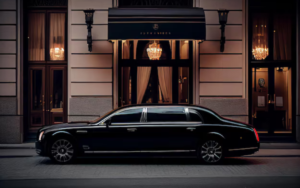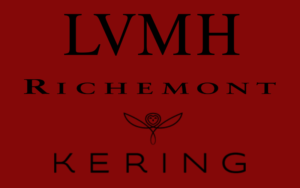Luxury has always represented the epitome of human creativity, innovation, and craftsmanship, appealing to those who seek not just quality, but an experience that transcends ordinary living. Today, the luxury market is driven by what we could call “The Holy 7 of Luxury„: seven categories that embody the quintessence of exclusivity, refinement, and allure. From fashion houses to rare collectibles, these industries don’t just create products—they craft legacies.
Let’s delve into each of these iconic categories, highlighting the facts, statistics, and leading brands that make each one an irreplaceable pillar of the luxury world.
1. Fashion & Leather Goods
Luxury fashion and leather goods are the heart of high-end consumer goods. The market is expected to further grow annually by around 4% from 2023 to 2028. This sector includes everything from designer handbags and couture dresses to exclusive accessories. All combined the heart of the luxury industry accounted for a whopping $245 billion in global market value in 2023.
Brands like Louis Vuitton, Hermès, Gucci, and Chanel have redefined what it means to be aspirational, setting trends and standards for the industry. Hermès, for instance, is famed for its Birkin bags—an icon that boasts both craftsmanship and exclusivity, often with a waiting list of several years.
In luxury fashion, “heritage” is everything. Many brands date back over a century and are still family-owned, like Hermès. This enduring legacy is integral to their value, providing an irreplaceable sense of authenticity and tradition in an era of fast fashion. The story the brand tells is what makes customers all over the world spend the GDP of some countries annually on fashion and leather goods.
2. Fragrances & Cosmetics
Fragrances and cosmetics are among the most accessible luxury items, often serving as an entry point into the luxury world. In 2022, this sector accounted for around $78 billion globally, with a projected annual growth rate of 5.5% over the next decade.
Chanel, Dior and Tom Ford’s Private Blend represent the crème de la crème of perfumes, especially Chanel No. 5 and Dior’s J’adore are leading the number of sales in the fragrance world. Brands like La Mer, Estée Lauder, and Lancôme dominate luxury skincare and make up. These brands invest heavily in R&D to ensure their formulas remain at the cutting edge of both performance and prestige. Especially for luxury fashion brands like Dior or Tom ford their private blend perfumes which are more soühisticated than the commercial line are competing with niche brands such as Xjerjoff or Killian
Fragrances and cosmetics are among the most accessible luxury items, often serving as an entry point into the luxury world. In 2022, this sector accounted for around $78 billion globally, with a projected annual growth rate of 5.5% over the next decade.
3. Watches & Jewelry
Few things speak to longevity and status like a luxury watch or piece of jewelry. The global market for watches and jewelry is valued at over $330 billion, with leading Swiss watchmakers and high jewelry brands holding a majority share.
When talking about the holy seven of luxury it is also important to mention the holy trinity of luxury watches. Patekt Philippe, Audemars Piguet and Vacheron Consatntin which together with Rolex lead the market of timepieces. Cartier, Tiffany & Co., and Van Cleef & Arpels are synonymous with high-end jewelry. Rolex watches, for example, are famous not only for their precision and craftsmanship but for their value retention and sometimes even appreciation over time.
The luxury in this sector isn’t just in materials or design—it’s also in the painstaking craftsmanship. Some timepieces require thousands of hours of work and generations of expertise, a testament to both the brand and the artisans behind each piece.
4. Wines & Spirits
Aged to perfection, wines and spirits are among the most prized luxury goods, capturing the fascination of connoisseurs worldwide. The luxury spirits market alone was worth $90 billion in 2022, and demand for fine wines has shown steady growth, especially in Asian markets.
Dom Pérignon, Louis XIII by Rémy Martin, and Macallan are the epitome of opulence in the world of spirits, while Château Margaux and Screaming Eagle lead in wines. Some of these bottles come with a price tag exceeding $10,000—a statement of both exclusivity and artful aging.
Wine and spirits are unique in their status as “liquid assets.” Rare and vintage bottles appreciate in value, making them not only a consumable pleasure but also a savvy investment for collectors.
5. Automotive & Transport
The luxury automobile market is more than just high-performance cars; it’s a lifestyle statement. In 2022, the sector was valued at $600 billion globally, with an increasing trend toward customization and electrification.
Brands like Rolls-Royce, Porsche, and Ferrari are household names in this realm, each symbolizing a unique blend of speed, performance, and hand-crafted design. Rolls-Royce’s Phantom, for instance, is known for its bespoke luxury, allowing owners to tailor nearly every detail to their taste.
In a world that’s moving toward mass production, luxury cars stand out as icons of personalized craftsmanship. High-end brands offer bespoke options that turn every car into a one-of-a-kind piece of art.
6. Art & Collectibles
Art and collectibles represent an entirely different level of luxury—one that is steeped in cultural significance. The global art market, valued at $67 billion in 2022, includes everything from classic paintings to contemporary installations, and its demand continues to rise, particularly among the ultra-wealthy.
Auction houses like Sotheby’s and Christie’s dominate this space, setting records with works by artists such as Picasso and Basquiat. Auction houses are especially involved in the sale of the most expensive paintings in the world. Meanwhile, contemporary collectibles, such as rare sneakers and NFTs, have introduced a younger audience to high-value collecting.
Art and collectibles are not only prestigious investments but also cultural statements. They allow collectors to acquire a piece of history, and as some items increase in value, they often become generational assets.
7. Travel & Hospitality
Luxury travel and hospitality are more than just destinations—they’re experiences designed to offer guests the ultimate in comfort and personalized service. This market is currently valued at over $1 trillion, with a trend toward immersive, curated, and sustainable travel experiences.
Cheval Blanc, Four Seasons, and The Ritz-Carlton are emblematic of this category, offering everything from private island escapes to ultra-luxury urban hotels. Aman, for example, is renowned for its secluded, tranquil properties where privacy and exclusivity are paramount.
Luxury travel today is about personalization and immersion. High-end hospitality brands provide curated experiences, allowing travelers to explore the world in unique and transformative ways, whether that means a private chef on a secluded beach or a wellness retreat in the mountains.
The Collective Allure of The Holy 7
Each of these categories offers something irreplaceable, yet all are bound by a single thread: the promise of exclusivity. For the discerning consumer, these aren’t just products or services—they are investments in experiences, traditions, and a lifestyle that speaks to the ultimate refinement. By understanding the intricate details that define each, we gain insight into a world where excellence is not just a standard, but an art form.





Pingback: The 5 Most Expensive Wines Ever Sold - Luxury with Calvin